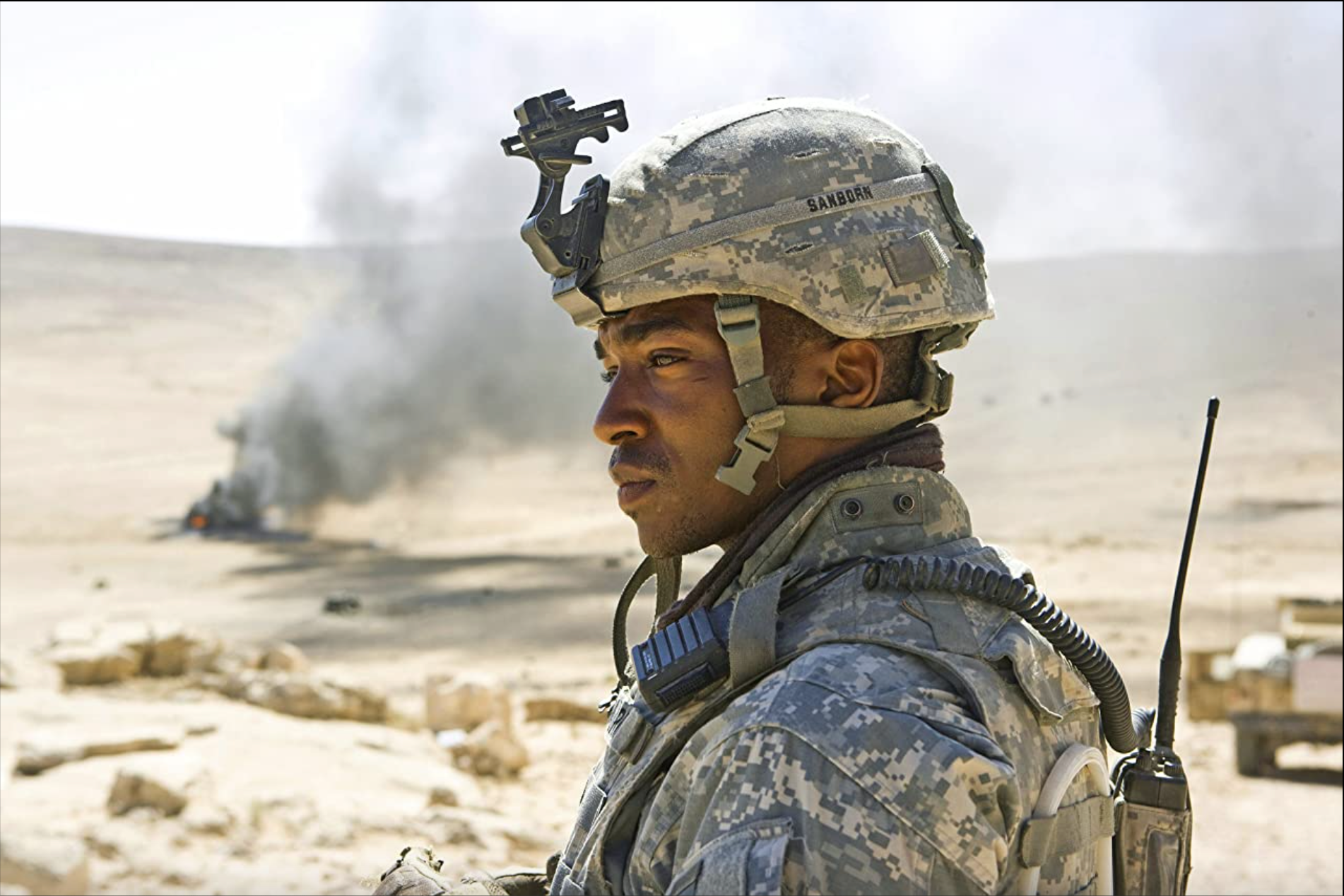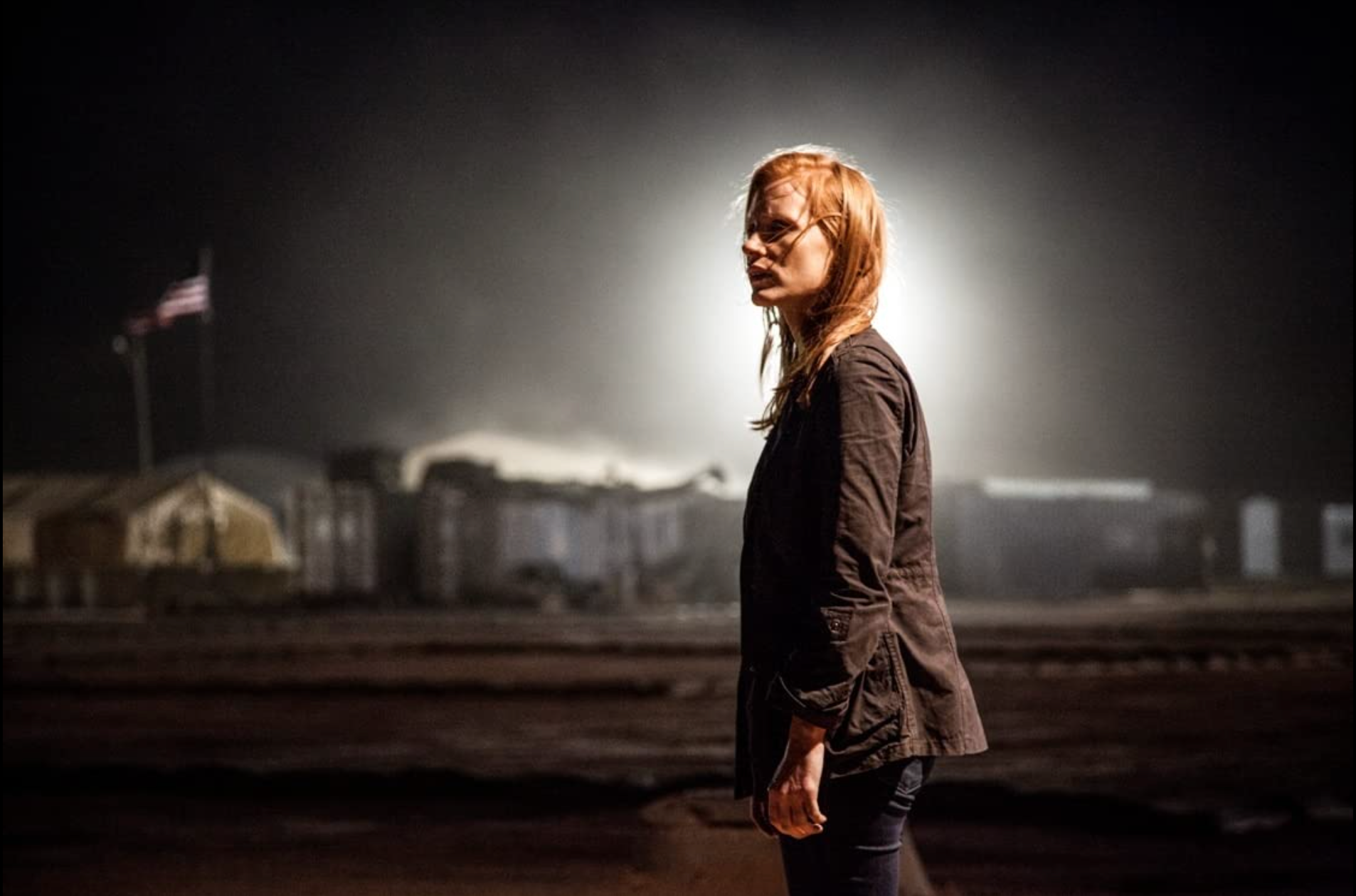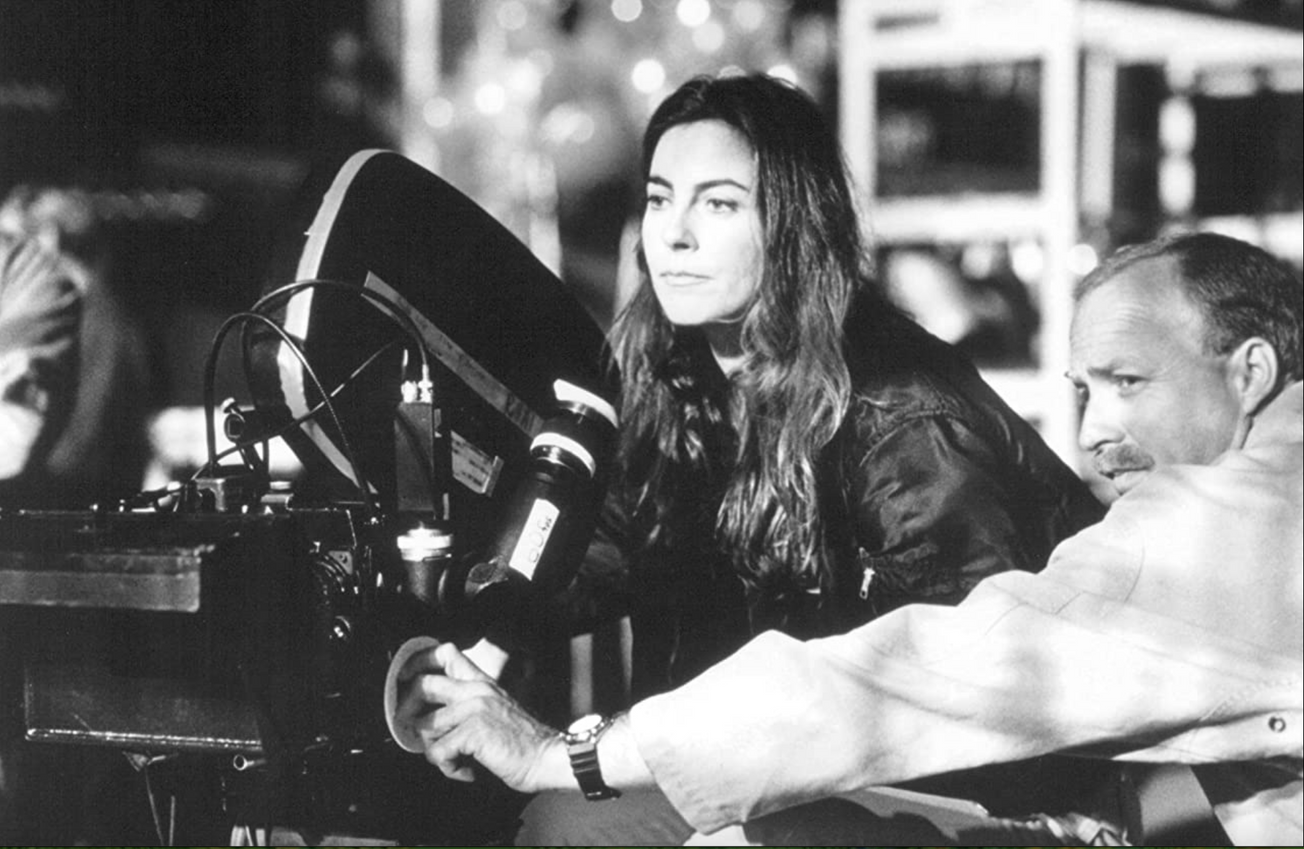By Isha Vibhakar, Second Year, Theatre and Film
Transposing the abstract to narrative, a painter turned auteur Kathryn Bigelow defied all odds by being the only woman to have won Best Director in the history of the Oscars.
Born in San Carlos, California girl Kathryn, the only child of a librarian and paint factory manager, celebrates her 69th birthday today! Much like her paintings, Bigelow’s cinema too densely packs ‘a sense of light reflected by darkness, combined with frantic movement’. From the dynamic and subjective camerawork to subverting character clichés to experimenting with genre-bending, her films are based on a recurring trope: testing the human physical boundary and the search for self-identity.
Outlined below are the three films that I feel illustrate the above analysis clearly, or what I like to call, the Big (pun intended) ‘M’ Matrix: military weapons (SQUID, IED), initials of the female leads (Mace and Maya) and challenging masculinity. Besides this, the opening sequence of all the three films propels the audience into the narrative by diving straight into the destiny of a character who is moving towards a mortal danger – be it a robbery gone wrong in Strange Days (1995) or a failed attempt at disarming an IED in The Hurt Locker (2008) or the first torture scene of Zero Dark Thirty (2012). Whilst this approach sets the tone of the film, it also establishes an emotional connection between the viewer and the character.
Strange Days (1995)
A neo-noir cyberpunk thriller unfolding in a late 20th century Los Angeles, this film centres around Lenny Nero (Ralph Fiennes), an undercover cop turned hustler who engages in illegal trade of unmediated experiences “straight from the cerebral cortex” to customers through SQUID (Superconducting Quantum Interference Device), an actual technology derived from the military.
The tapes that were meant to serve as a means to escapism instead fall prey to criminal activity and pornography. While this mystery unfolds, civil unrest breaks out in the city following the death of political rapper Jeriko One (Glenn Plummer), whose assassination was captured by the LAPD via SQUID. I can’t stress enough how relevant this premise is in our current climate: while it obviously echoes the death of George Floyd, institutional racism and the rise of the Black Lives Matter movement, the themes of sadism and voyeurism further assert the horrific implications of technology.

The Hurt Locker (2008)
From earning critical acclaim at Venice and Toronto Film Festivals to winning 6 awards out of 9 Oscar nominations, including Best Director for Bigelow and Best Motion Picture of the Year, The Hurt Locker became a landmark war film that openly resisted the gender conventions in terms of genre and direction.
This film explores the war in Iraq and the visceral experiences of the soldiers who fight. It portrays those who feed off the thrill of the war versus those suffering from shell shock. In fact, it opens with a quote from writer Chris Hedges: “The rush of battle is a potent and often lethal addiction, for war is a drug” and Jeremy Renner’s James, a bomb disposal expert is the exact embodiment of this idea. Bigelow taps into the sensitive side of the soldiers offering perspectives into fatherhood, male bonding and Renner’s playful interactions with a local boy, Beckham.
The film features future Marvel heroes, Renner and Anthony Mackie with a teasing appearance from Ralph Fiennes.

Zero Dark Thirty (2012)
This film is an approach to the “war on terror” in a rather extensive format of research and firsthand insight from the CIA personnel.
It begins with 9/11 to give context for the decade long international manhunt for Al-Qaeda leader Osama Bin Laden (OBL). Jessica Chastain’s Maya seems like a stand-in for Bigelow herself, as the latter once mentioned in her interview that, “if there’s specific resistance to women making movies, I just choose to ignore that as an obstacle for two reasons: I can’t change my gender and I refuse to stop making movies”.
Maya too, regardless of being the only surviving woman, works relentlessly in a man’s world and ultimately, is rewarded for her intellectual brilliance in finding vital links leading to OBL’s Pakistani safe house.

An inspiration to all the women directors in the world, Bigelow’s work remains unmarred till date. I can’t wait to revisit her older movies like Near Dark (1987), Blue Steel (1990) and Point Break (1991) and enrich my filmmaking knowledge.
Featured: Jonathan Olley, IMDb / Lightstorm Entertainment, 1999, © 2008 Summit Entertainment
Which one of Kathryn Bigelow's films is your favourite?








